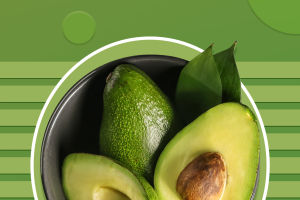Bread is a staple food prepared from a dough of flour (usually wheat) and water, usually by baking. Throughout recorded history and around the world, it has been an important part of many cultures' diet
Method To Make Bread dough
While each variety of bread will have slight variations, the basic process of making bread dough is the same across the board. These are the basic steps for how to make bread dough:
1. Putting In Place
Before starting the bread-making process, it is important to gather all of your ingredients and measure them accurately. Measuring ingredients by weight is a much more accurate way to measure and is the preferred method for bread making.
OPTIONAL STEP: PROOFING YEAST
Some bread recipes include a step prior to mixing the dough called “proofing the yeast.” This step involves hydrating dry yeast in some or all of the liquid used in the recipe and adding a pinch of sugar.
The water wakes the dry yeast up from its dormant state and the sugar gives the yeast something to feed on. After mixed, you will allow the mixture to sit for 5-10 minutes to check for foaming. Bubbles and foaming are signs that the yeast is alive and you can add it to your dough.
While this step is never required, it can always be used to jump start your yeast and to check that it is alive. I recommend doing this if you are brand new to bread baking or if you are worried that your yeast might be old.
2. MIXING
The order in which ingredients are combined varies based on the types of bread. The straight dough method, the modified straight dough method, and the sponge method are the three mixing methods for combining ingredients for a bread dough
3. KNEADING
After the ingredients for the bread dough are combined the dough is kneaded. Dough can be kneaded in a stand mixer using a dough hook, or by hand. Knead the dough until it is smooth and elastic. The length of time dough is kneaded depends on what kind of bread you are making. Dough without any fat (lean dough) will be kneaded longer, while bread dough that contains fat (enriched dough) will be kneaded for a shorter period of time.
4. BULK FERMENT (1ST RISE)
After the dough is mixed and kneaded, it is allowed to rest and ferment. Fermentation occurs when the yeast begins to feed on the starches and sugar present in the dough. As the yeast feeds, carbon dioxide is produced which makes the dough rise and develops the texture and flavor of the bread.
5. SHAPING
After the dough has bulk fermented, it is shaped into rolls, loaves, or specialty shapes likes braids.
6. PROOFING OR PROVING (2ND RISE)
The term proofing also called proving, refers to the rise that happens after the dough is shaped. The same fermentation process is happening during this step as it is in step 3, but this is where the shaped dough gains the bulk of its volume. Typically, shaped bread dough should rise until double in size
7. BAKING
After the bread has proofed sufficiently it should be baked. If you wait too long to bake the bread dough after it has proofed, it can overproof which will cause a sour taste and large holes in the final product.
Bread is cooked through when its internal temperature reaches 190-200 F (99-94 C).


